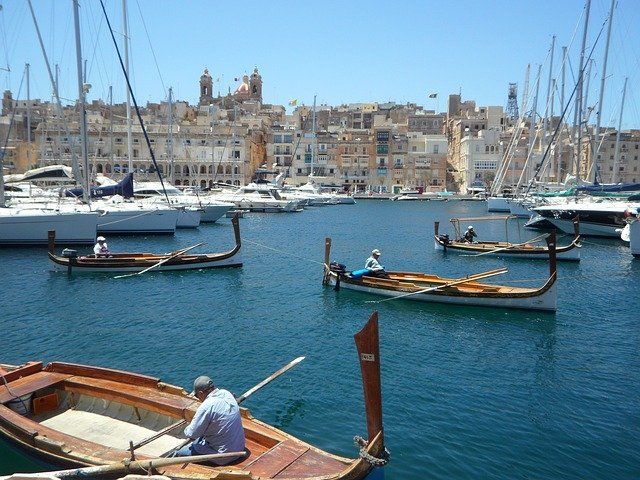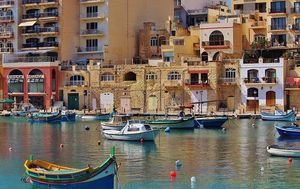Area: A small group ofislands in the Mediterranean Sea, south of Sicily, with a total area of 122 square miles. The three largest islands are inhabited – Malta, Gozo, and Comino.
Environment: Malta’s terrain is rocky (limestone) and quite low-lying. It enjoys a Mediterranean climate. Just over a third of the land is arable, although soil quality is often poor. There is only a limited supply of natural fresh water, making desalination of seawater necessary.
Population: About 400,000, predominantly native Maltese. Two-thirds as many again have emigrated to Australia, Britain and Canada.
Life expectancy: Men 75,women 80 years.
Official languages: Maltese and English.
Literacy: 88%.
Capital and main port: Valletta.

Urbanisation: 85%.
Economy: Malta’s natural resources are limestone and salt. It produces about a fifth of its own food and has no domestic energy sources.
Over the last fifteen years Malta has become a major freight port and financial centre. The economy is dependent on foreign trade, ship building, light industry (electronics and textiles), and tourism. For example, in 1999 over 1 million tourists visited the island.
Religion: Roman Catholicism is the state religion, with 98% of the population being RC, and Protestants only accounting for 0.6%. The main Protestant denominations are Anglican, Baptist and Pentecostal (Assemblies of God). There are charismatic house churches.
History: Great Britain obtained Malta as a colony in 1814. Malta remained loyal to Britain throughout both World Wars, winning the George Cross in 1942 for its heroic resistance to German and Italian air raids.
Malta became independent of Britain in 1964 and a republic in 1974, but is still a member of the Commonwealth. It is a parliamentary democracy. Malta has applied for EU membership.










